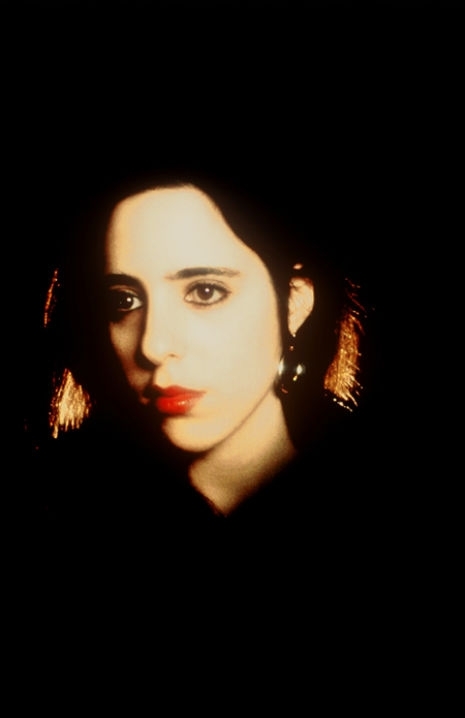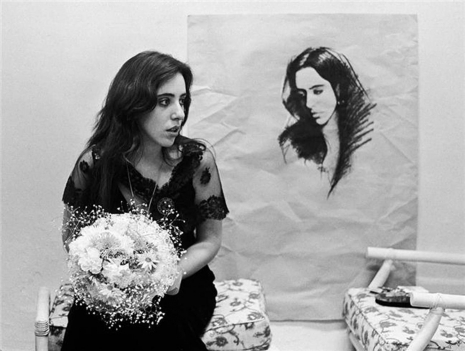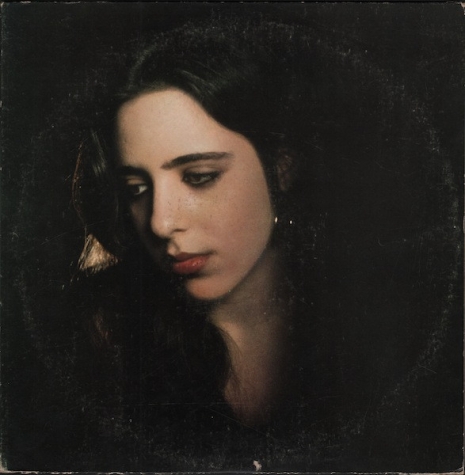
Although Laura Nyro is rightfully considered to be one of America’s greatest 20th century songwriters, most people who know her music probably don’t know her name. Some of Nyro’s biggest hits were recorded by the likes of Barbra Streisand, The 5th Dimension and Three Dog Night. Performers such as Elton John, Bette Midler, Rickie Lee Jones and Todd Rundgren (who wrote a love song for her, “Baby Let’s Swing”) have all spoken of how Nyro influenced their music and paid tribute to her during their careers. Although she’s little more than the subject of cult adulation today, when Laura Nyro’s second album, Eli and The 13th Confession was released in 1968—when she was just 20—it was one of the absolute stand-out albums in a year that also saw the releases of the White Album, Music from the Big Pink, Astral Weeks and Beggars Banquet.
In the context of today’s mostly bland mainstream pop Eli and The 13th Confession, a now 48-year-old album, sounds even more astonishing than it did when it first came out. A showcase for Nyro’s brash swooping, soaring hippie vocals and accomplished piano playing, Eli is one of the most powerfully emotional and confessional albums ever recorded. It’s easily one of my top 50 albums of all time, although it’s a difficult record to listen to all the way through without tearing up giving way to full on crying. I envy any of you reading this who have yet to hear it or the two other albums in the trio of “classic” Laura Nyro albums, New York Tendaberry and Christmas & Beads of Sweat. You’re not merely “in for a treat,” expect something closer to being overcome—even temporarily paralyzed—by an astonishingly pure musical genius.
It’s widely known that The Who and The Jimi Hendrix Experience made their first major US appearances at the 1967 Monterey Pop Festival and that Janis Joplin, too, made her big debut on that stage, but when 19-year-old Laura Nyro came on to perform three songs that night, in front of that huge, huge crowd, it was only the second time that she had been on a stage, ever. Nyro performed an 18-minute-long set after The Byrds and before the Jefferson Airplane. The story is told over and over again of how she walked off the stage and collapsed in tears, sure that the audience hated her and was booing as she sang. Mama Michelle Phillips got her stoned and drove her around for a while to calm her down. However when documentary film director D.A. Pennebaker found the footage of this performance many years later, this “legend” (which was perpetuated by Nyro herself and was contained in her New York Times obituary) was debunked. The only audible thing being shouted after Nyro performs is “Beautiful!” and there is no booing heard at all.

Photo by Joel Bernstein
On the first episode of Elvis Costello’s talk show Spectacle in 2008 he asked his guest Elton John to name his biggest musical influences. High on that list for John was Laura Nyro about whom he said “I idolized her.”
He went on to answer the question by addressing the audience and assuming (probably correctly) that few of them would even know who Laura Nyro was.
“She was the first person, songwriting-wise, where there were no rules. There were tempo changes. There wasn’t a verse, chorus, verse, chorus, middle eight. She didn’t write in that kinda way. And that put in my mind that you didn’t have to work in that old template that everyone else did… She just carried on in her own kinda weird way and the melodies were just fantastic… She influenced more songwriters that came out—and successful songwriters—than probably anyone who came before her.”
John urged the audience to seek out Nyro’s work, comparing hearing her music for the first time to walking into an old cathedral in Venice and seeing a Paolo Veronese painting.
“This is music so far ahead of its time that still sounds so unbelievable. The soul, the passion, just the out and out audacity of the way her rhythmic and melody changes come is like nothing I’d ever heard before.”
It was probably Elton John’s forceful testimonial to the prodigious talents of Laura Nyro that saw her—finally!—get inducted into the Rock and Roll Hall of Fame in the shamefully late year of 2012. As a big Laura Nyro fan, I keep hoping against hope that the late singer-songwriter—Nyro died of ovarian cancer at the age of 49 in 1997—will be rediscovered with every fresh honor or accolade or new reissue of one of her classic albums, but this sadly never happens. To the vast majority of millennials Laura Nyro’s name would not be one easily encountered. If asked to name a female singer songwriter of the 60s or 70s, I think most culturally aware people could probably identify Joni Mitchell or Carole King to some extent, but Laura Nyro’s name I would imagine would tend to draw a blank with most baby boomers, let alone anyone much younger. Although the songs she wrote that were recorded by others sold millions upon millions of records—songs like “Wedding Bell Blues,” “Eli’s Coming” and “Stoney End”—Nyro’s own albums sold modestly, to a dedicated fanbase. She was ambivalent—if not openly hostile—towards a career in the music industry, seldom agreeing to appear on television and trying to retire completely when she was just 24.
If you love her music—I see Nyro as one of the greatest geniuses of 20th century music—it seems colossally unfair that so few people today—especially young women—don’t know about her. Consider this, then, my small attempt to convince at least some of you that you need to get on the Laura Nyro train, stat.

But don’t just take my word for it. NY Daily News music critic Jim Farber wrote passionately about Laura Nyro when she was snubbed by the Rock and Roll Hall of Fame—again—in 2011:
When you listen to Laura Nyro albums, starting with her 1968 Columbia debut, Eli and the Thirteenth Confession, it’s hard to name the precise genre you’re hearing. Is it jazz? R&B? Art-song? Motown? Girl group pop? Or something from the world of classical music?
All those genres found their way into her songs. The unconventional keys and startling tempo changes indicate jazz. The theatrical melodies speak of Broadway, the sense of introspection says singer-songwriter, while the tunes’ soul plays straight to the heart of Berry Gordy’s Motown.
Sheryl Farber wrote of Nyro on Trunkworthy:
She did it all—words and music—with a voice so singularly her own, creatively and vocally, that her first record’s title, More Than A New Discovery, is a prescient, bold declaration from a time when many pop musicians and music-biz people didn’t think they were making music anyone would care about generations later. But as this title claims: This is someone who will outlast the hype.
And what made them think that? When you hear these songs you’re undeniably in the presence of a brilliant soul who had absorbed the rich pageant of American music—gospel, jazz, musicals, Tin Pan Alley, doo-wop, soul, girl group, rock ’n’ roll—as well as American folklore and tales of the city. And you can hear it all in her phrasing, in her lyrics, in the composition—and in that vocal power built from the Bronx street-corner singing she had done when she was a young girl.
But just as impressive as the styles she mined for her first record is the range of complicated emotion she was able to understand and dig deep into for her songs. Laura Nyro was only 19 when she made this LP in 1966. Nineteen! And she could write about the supreme heights of infatuation and the ditch lows of betrayal and loss and provide any grownup who knows of such things with a musical mirror of his/her experience. This is sophisticated adult pop made by one world-wise teenager.
Since she couldn’t be categorized so conveniently, Laura Nyro sometimes seems lost in the crowd of great songwriters and performers from pop’s most prolific age, rather than a standout with a singular vision doing her own thing between hippie abandon and Brill Building formalism.
The best footage of Laura Nyro comes from D.A. Pennebaker’s Monterey Pop outtakes. Below you can see her singing “Wedding Bell Blues” and a stunning “Poverty Train” that showcases the best of what she did.
Here’s Bette Midler’s moving and tear-filled testimonial to the great Laura Nyro during her induction into the Rock and Roll Hall of Fame in 2012. In it you can see a brief snippet of a lip-sync of “Wedding Bell Blues.” As there are is such a small number of TV appearances from her career, this is one of the only documents of Nyro performing anything or anywhere in her youthful hippie gypsy prime. They had to make do with animating photos as there’s so little film or video footage of her in action that exists.
Laura Nyro performs “He’s a Runner” and “Save the Country”
“You Don’t Love Me When I Cry”
“New York Tendaberry”
Sissy Spacek smokes pot and dances to Laura Nyro in ‘A Home at the End of the World’